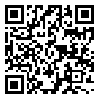Volume 13, Issue 4 (3-2012)
yafte 2012, 13(4): 5-10 |
Back to browse issues page
Download citation:
BibTeX | RIS | EndNote | Medlars | ProCite | Reference Manager | RefWorks
Send citation to:



BibTeX | RIS | EndNote | Medlars | ProCite | Reference Manager | RefWorks
Send citation to:
nadri S, saran S M, Teimouri H, Soltani M, Anbari K. The frequency of blood transfusion and its components in hospitalized patients in Shohada Ashayer hospital in Khorramabad, 2009. yafte 2012; 13 (4) :5-10
URL: http://yafte.lums.ac.ir/article-1-633-en.html
URL: http://yafte.lums.ac.ir/article-1-633-en.html
Lorestan University of Medical Sciences
Abstract: (18897 Views)
Background : Blood is a resusciate source of life which there is no replacement for it. Limited time of preserving, screening tests of blood health, group determining, and cross-matching, that necessitate personal and laboratory costs, increase the importance of correct request and suitable consumption. This study was conducted to determine the frequency of blood transfusion and its components and calculate the ratio of C/T.
Materials and Methods: This descriptive-analytic study included 648 patients for whom blood and blood components were requested during the study. The data regarding the variables were recorded in a checklist and then were analyzed using the SPSS software.
Results: The results showed that during the study 7746 patients were hospitalized and blood or blood components were requested for 648 (8%) of them. Out of these patients, 265 (40.9%) received transfusions of blood or its components. Packed cell was the most frequently transfused component (71.3%). The mean HB (hemoglobin) in the patients before transfusion was 9.49 gr/dl. Chronic anemia was the most prevalent indication of transfusion, and femoral fracture surgery was the most frequent operation needing blood transfusion. The C/T ratio was found to be 1.1.
Conclusion: In this study, 59.1 % of the requested units were not used. Realizing requests based on scientific needs, and costs of production, preserving, separating components, transporting them to hospitals, and cross-matching including laboratory needs and manpower are recommended.
Type of Study: Original Research |
Received: 2012/03/3 | Accepted: 2021/07/12 | Published: 2012/03/15
Received: 2012/03/3 | Accepted: 2021/07/12 | Published: 2012/03/15
Send email to the article author
| Rights and permissions | |
 |
This work is licensed under a Creative Commons Attribution-NonCommercial 4.0 International License. |





